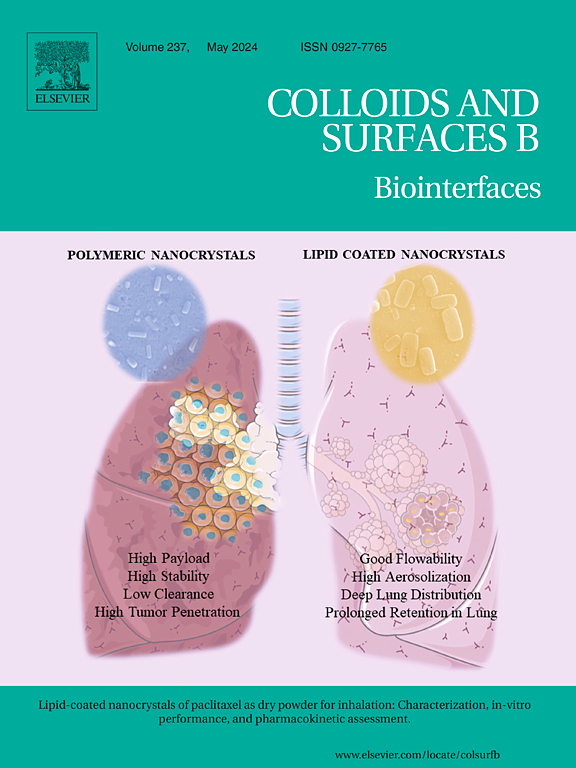纳米治疗癫痫的最新进展。
IF 5.4
2区 医学
Q1 BIOPHYSICS
引用次数: 0
摘要
癫痫是一种复杂的神经系统疾病,其特征是反复发作,影响全世界数百万人。尽管药物治疗取得了进展,但由于血脑屏障(BBB)的不渗透性、多药耐药和多方面的癫痫发生等挑战,很大一部分患者仍然对传统抗癫痫药物(aed)产生耐药性。纳米技术为克服这些障碍提供了有希望的策略,通过增强药物在血脑屏障上的传递,提高靶特异性和最小化全身副作用。本文综述了用于癫痫治疗的纳米递送系统的不同创新策略的最新进展,并将讨论这些纳米递送系统的设计原则、作用机制和治疗效果。此外,我们还讨论了阻碍纳米药物治疗癫痫临床转化的挑战和限制。我们强调个性化和多学科方法的必要性,以及持续研究和跨学科合作的重要性,以便将这些创新策略转化为有效的治疗方法。最终,纳米技术的使用有可能加强癫痫发作的控制,减轻癫痫的负担,并改善受这种复杂神经系统疾病影响的患者的生活质量。以纳米技术为基础的药物输送系统可能迎来癫痫治疗精准医学的新时代。本文章由计算机程序翻译,如有差异,请以英文原文为准。
Recent advances in nanotherapy-based treatment of epilepsy
Epilepsy is a complex neurological disorder characterized by recurrent seizures affecting millions of people worldwide. Despite advances in drug therapy, a significant proportion of patients remain resistant to conventional antiepileptic drugs (AEDs) due to challenges such as impermeability of the blood-brain barrier (BBB), multidrug resistance, and multifaceted epileptogenesis. Nanotechnology offers promising strategies to overcome these barriers by enhancing drug delivery across the BBB, improving target specificity and minimizing systemic side effects. This review explores recent advances in different innovative strategies of nanodelivery systems for epilepsy therapy, and we will discuss the design principles, mechanisms of action and therapeutic efficacy of these nanodelivery systems. In addition, we discuss the challenges and limitations that hinder the clinical translation of nanomedicine-based therapies for epilepsy. We emphasize the need for personalized and multidisciplinary approaches as well as the importance of continued research and interdisciplinary collaboration in order to translate these innovative strategies into effective therapies. Ultimately, the use of nanotechnology has the potential to enhance seizure control, reduce the burden of epilepsy, and improve the quality of life of patients affected by this complex neurological disorder. Nanotechnology-based drug delivery systems may usher in a new era of precision medicine for epilepsy treatment.
求助全文
通过发布文献求助,成功后即可免费获取论文全文。
去求助
来源期刊

Colloids and Surfaces B: Biointerfaces
生物-材料科学:生物材料
CiteScore
11.10
自引率
3.40%
发文量
730
审稿时长
42 days
期刊介绍:
Colloids and Surfaces B: Biointerfaces is an international journal devoted to fundamental and applied research on colloid and interfacial phenomena in relation to systems of biological origin, having particular relevance to the medical, pharmaceutical, biotechnological, food and cosmetic fields.
Submissions that: (1) deal solely with biological phenomena and do not describe the physico-chemical or colloid-chemical background and/or mechanism of the phenomena, and (2) deal solely with colloid/interfacial phenomena and do not have appropriate biological content or relevance, are outside the scope of the journal and will not be considered for publication.
The journal publishes regular research papers, reviews, short communications and invited perspective articles, called BioInterface Perspectives. The BioInterface Perspective provide researchers the opportunity to review their own work, as well as provide insight into the work of others that inspired and influenced the author. Regular articles should have a maximum total length of 6,000 words. In addition, a (combined) maximum of 8 normal-sized figures and/or tables is allowed (so for instance 3 tables and 5 figures). For multiple-panel figures each set of two panels equates to one figure. Short communications should not exceed half of the above. It is required to give on the article cover page a short statistical summary of the article listing the total number of words and tables/figures.
 求助内容:
求助内容: 应助结果提醒方式:
应助结果提醒方式:


